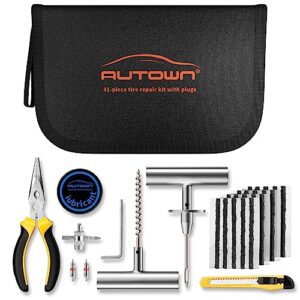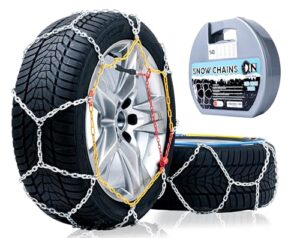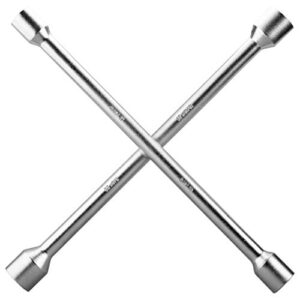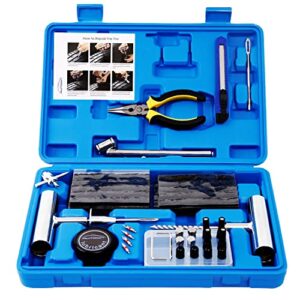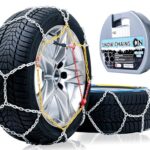Tires are expensive due to advanced engineering and high-quality materials required for safety and performance. Production costs, including research and development, also contribute to their high price.
Purchasing tires is a significant investment for drivers everywhere. Manufacturers invest heavily in the cutting-edge technology and robust materials needed to ensure that tires can withstand various conditions while offering optimal safety and efficiency. These costs influence the final retail price, reflecting the innovation and sophistication inherent in modern tire design.
The development process, which includes rigorous testing and safety certifications, often means additional expenses that are passed on to consumers. Moreover, tires are subject to strict regulatory standards worldwide, which mandate their durability and environmental impact, further intensifying production complexities. Understanding these factors helps explain the premium price of tires, which play a critical role in the performance and safety of any vehicle.
Tire Cost Conundrum Revealed
The experience of purchasing new tires often comes with a sense of sticker shock for many consumers. As essential components to any vehicle, tires play a critical role in safety, performance, and efficiency. Yet, their high cost can leave drivers bewildered. Unraveling this tire cost conundrum unveils several facets that contribute to the price tag, from advancements in tire technology and the use of premium materials to global economic factors and rigorous safety standards.
The Pivotal Role Of Tire Technology And Materials
Modern tires are feats of engineering, crafted to deliver exceptional performance across various terrains and weather conditions. To understand their expense, one must consider the:
- Innovative designs that require extensive R&D.
- High-quality materials such as synthetic rubber, steel belts, and fabric plies.
- Advanced features like low-rolling resistance and weather adaptability.
These aspects ensure durability and safety, but they also inflame the cost.
Global Economic Influences On Tire Pricing
It’s not just technology and materials that dictate the cost of tires. The global economy leaves its mark through:
- Volatile raw material prices, notably rubber and oil.
- The ripple effect of exchange rates and trade policies.
- Logistical costs, including transportation and storage.
These elements can cause tire prices to fluctuate, reflecting the complex nature of the global supply chain.
Safety Standards Impact On Manufacturing Cost
Tire manufacturers must adhere to stringent safety regulations. The emphasis on safety means:
- Investment in quality control measures to meet or exceed standards.
- Continual testing and improvements for safety compliance.
- Integrating features like traction control and pressure monitoring to enhance safety.
Each of these contributes to increased production costs, ensuring that every tire on the road can protect drivers in various conditions.
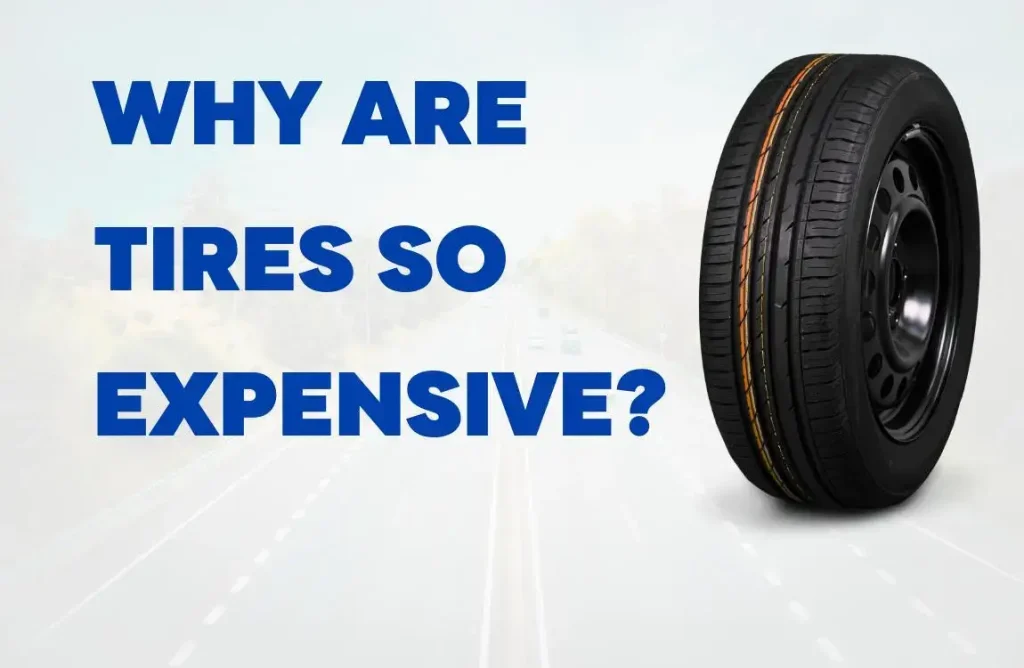
Crafting Quality: Material Costs
When considering the expense of high-quality tires, one must not overlook the pivotal role of material costs. The meticulous process of crafting tires involves selecting and sourcing premium materials, which are key contributors to the final product’s price tag. Tires aren’t merely rubber rings; they’re engineered for performance, safety, and longevity. Every tire is a complex marriage of materials and technology, designed to provide the best possible experience on the road. This section delves into the specifics of what goes into tires and why these components are substantial factors in their overall cost.
Natural Rubber: The Quest For Durability
Tires owe their resilience and durability in large part to natural rubber. Harvested from rubber trees, this material is the foundation of tire toughness and flexibility. The process from tree to tire is not trivial; it requires a significant amount of resources, including labor, land, and time. With the demand for natural rubber worldwide, its price is consistently affected by global market fluctuations, contributing to the premium cost of tires. Furthermore, the pursuit of eco-friendly and sustainable rubber further amplifies this cost.
Synthetic Materials Blending
Aside from natural rubber, manufacturers blend in an assortment of synthetic materials. These are tailored to enhance tire performance in various conditions. The synthesis of materials such as butadiene and styrene-butadiene rubber involves complex chemical processes. Their inclusion ensures tires can withstand extreme temperatures and wear, delivering a smoother driving experience and better fuel economy. The research and development behind these synthetic blends also add to the overall expense, making the tires more costly but also more advanced and reliable.
Innovative Tread Designs
The intricate tread patterns you see on tires are the result of meticulous design and engineering aimed at optimizing traction, handling, and water dispersal. Tread patterns vary considerably, with each design serving a specific purpose: be it for off-road adventure, high-speed stability, or all-weather grip. These innovative trends are not just about aesthetics; they are critical for safety and performance. The process of developing these designs often involves extensive testing and simulation, which, as expected, increases the overall cost of the tire.
Why Are Tires So Expensive? Unraveling The Cost Mystery
Ever question the price tag attached to a set of new tires? Tire cost often takes drivers by surprise, prompting many to wonder about the factors that contribute to their significant price. It’s not just a matter of rubber; there’s a complex blend of technology, research, and environmental considerations baked into each tire. Let’s delve into the financial breakdown and uncover why those round, rubbery investments can hit your wallet hard.
The process of creating tires is far from simple. It involves the coordination of multiple materials and a series of specialized steps:
- Formulating advanced rubber compounds
- Layering components for durability
- Applying steel and fabric reinforcements
This complexity is necessary for tire performance but inevitably drives up production costs, affecting retail prices.
Enhancing tire longevity takes considerable investment. Manufacturers pour financial resources into:
- Experimenting with new materials
- Developing innovative tread designs
- Testing for optimal performance under varying conditions
Such extensive R&D ensures each tire offers the necessary quality and safety for driving, but it also adds to the tire’s final price.
Environmental considerations play a critical role in pricing. Stringent regulations require:
- Eco-friendly production practices
- Recycling programs
- Development of tires that optimize fuel efficiency
Meeting these requirements often involves additional costs, which are reflected in the price consumers pay for environmentally compliant tires.
Market Trends Influencing Tire Prices
Understanding why tire prices can be high often leads us to look closely at market trends that influence their cost. Like many commodities, tires don’t exist in an economic vacuum. Several external factors play a part in determining their price on the shelf. Notably, the economics of supply and demand, transportation and distribution costs, and branding and marketing expenses are key influencers. Each of these aspects contributes its own complexities to the final price tag consumers see. Let’s dive into these factors.
The Economics Of Supply And Demand
At the core of tire pricing lies the fundamental economic principle of supply and demand. Several elements contribute to this dynamic:
- Global raw material shortages or surpluses affect availability.
- Changes in the automotive industry can increase or decrease demand.
- Trends in consumer preferences—such as a shift towards more sustainable materials—can influence demand for specific types of tires.
With the automotive market ever-evolving and raw materials being susceptible to the whims of global trade, prices can fluctuate significantly based on how much product is available versus how much is needed.
Impact Of Transportation And Distribution
Distribution logistics also play a critical role in tire pricing:
Rising fuel costs can directly affect the price to ship tires from manufacturers to distributors and retailers.
International tariffs and trade agreements can add extra layers of cost that are eventually passed down to the consumer.
The cost of warehousing and stock management can influence how much it costs to keep a ready supply of tires on hand at retail outlets.
When considering these impacts, it’s clear that tires travel a complex journey before they ever reach a vehicle, with each step adding to the final price.
Branding And Marketing Expenses
Finally, the cost to establish and maintain a brand’s reputation has its own implications:
| Factor | Implication on Tire Prices |
|---|---|
| Advertising | Campaign costs are typically passed to consumers. |
| Sponsorships | Deals with sports teams or events can be costly. |
| RD | Investment in tire innovation and quality improvement increases overall production costs. |
These branding and marketing strategies are integral to competing in a crowded market and building consumer trust but can lead to higher retail prices for tires.
Beyond The Price Tag: Longevity And Performance
Investing in new tires can sometimes hit the wallet harder than expected. Why are tires so expensive? The answer doesn’t just lie in the price tag itself. There’s much more beneath the surface: longevity and performance are key components that determine the true value of tires. High-quality tires offer numerous benefits that contribute to their cost but justify them in the long run through their extended service life and improved vehicular capabilities.
Balancing Cost With Performance Benefits
Consumers often find themselves weighing the pros and cons of splurging on tires. Premium tires may come with a higher price tag, but what they bring to the table justifies the initial outlay. Enhanced materials and sophisticated design not only improve the safety and efficiency of the vehicle but also ensure that the tires can withstand the test of time and harsh driving conditions.
- Advanced rubber compounds that offer better traction.
- Improved tread designs that provide a smoother and quieter ride.
- Reinforced sidewalls that can handle greater stress and potential damage.
This balance of cost and performance benefits is crucial for drivers who prioritize safety and longevity in their vehicle maintenance.
The Value Proposition Of Premium Tires
The allure of premium tires lies not only in their performance but also in their extended lifespan. Higher quality materials and construction give these tires the ability to outlast cheaper counterparts. Drivers can expect fewer tire changes and more consistent performance over the life of premium tires, resulting in long-term savings and less frequent replacements.
Consider the following factors contributing to the value of premium tires:
| Factor | Benefit |
|---|---|
| Better fuel efficiency | Saves money on gas |
| Less wear over time | Longer intervals between tire purchases |
| Superb handling and braking | Increased safety and performance |
It’s the high return on investment that makes premium tires a practical choice for many drivers.
Warranty And Service Expectations
Another critical aspect underpinning the cost of tires is the warranty and service that accompany them. Premium tires typically come with extensive warranties and guarantees, offering protection against defects and premature wear. This ensures that consumers get the most out of their purchase and can drive confidently with support at the ready should issues arise.
- Tread life expectancy
- Workmanship and materials
- Road hazard protection
These warranties, coupled with the promise of exceptional customer service, provide peace of mind and signify that manufacturers stand behind their high-quality products. Drivers can enjoy premium performance without anxiety over potential additional costs down the road.

Frequently Asked Questions
What Factors Influence Tire Prices?
Various factors contribute to tire costs, such as advanced technology, research and development, high-quality materials, and rigorous safety tests.
How Often Do Tire Prices Change?
Tire prices fluctuate based on raw material costs, supply-demand balance, seasonal demands, and economic conditions.
Are Expensive Tires Worth The Investment?
Expensive tires often ensure longer tread life, better performance, safety features, and warranty coverage, justifying the investment for many drivers.
Conclusion
Understanding tire costs can guide smarter purchasing decisions. Quality materials, rigorous R&D, and advanced features contribute to the price. Remember these factors next time you invest in new tires. This investment ensures safety and performance on the roads. Choose wisely for lasting benefits.







